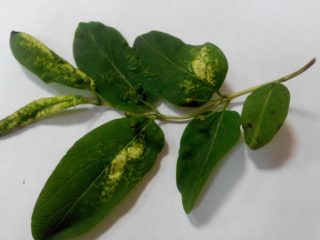Content
Honeysuckle is a bushy plant with edible fruits. Various varieties have been bred, differing in yield, flowering period, frost resistance and other characteristics. The description of the Chulymskaya honeysuckle variety will help gardeners get to know the culture in more detail and properly care for it.
Description of Chulymskaya honeysuckle
Shrub up to 1.3 m in height, perennial, medium-sized, spreading. It belongs to the large family of Honeysuckle. Shoots are medium, not thick, green, pubescent. The leaves are almond-shaped.
Fruits are irregular in shape, flattened from the sides, fusiform, with a dimple at the top. The color ranges from plum and gray to deep purple with a waxy bloom and thin skin. Weight from 1.1 to 1.7 g. Chulym honeysuckle berries are distinguished by high taste. They are sweet and sour, refreshing, like blueberries. The yield reaches 5 kg from one bush. Suitable for human consumption.
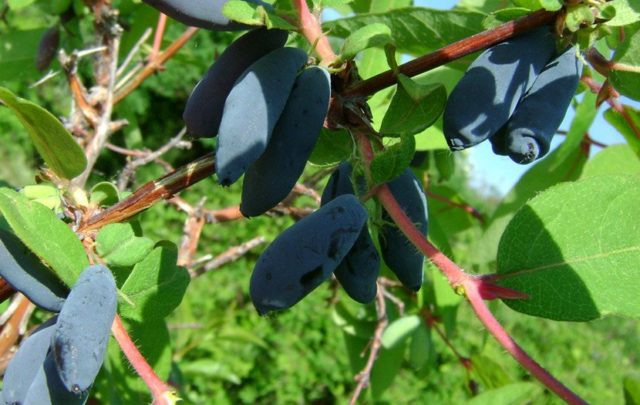
The berries of the Chulym honeysuckle are rich in vitamins and minerals, have a tonic effect on the body, strengthen the immune system
Planting and caring for Chulymskaya honeysuckle
With a caring attitude and proper care, Chulym honeysuckle will delight for a long time with fresh greens and fragrant flowers. To get a high-yielding shrub, you must adhere to the rules of planting and care.
Landing dates
Young bushes can be planted in autumn or spring. Saplings with open roots are best planted in September or early October.
It is advisable to transfer young bushes of Chulym honeysuckle with a closed root system to the ground in the spring (late March - April), but this can be done at any time of the year.
Selection and preparation of the landing site
Chulymskaya honeysuckle is an unpretentious culture, but the choice of a landing site must be approached responsibly. The seedling needs sufficient lighting, but with an excess it begins to dry out and hurt. Shading inhibits flowering and fruiting. It is necessary to find a place where the lower part of the plant will be in the shade, and the upper one will receive direct sunlight.
The place must be chosen so that the Chulymskaya honeysuckle does not stand in the wind. Strong gusts can pluck flowers and fruits from branches.
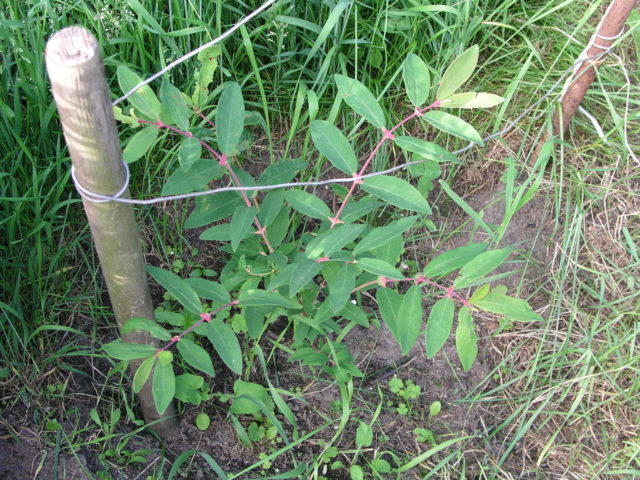
Saplings can be tied up until they are firmly rooted in a new place.
The soil should be moist and fertile, well-drained with a neutral pH (between 6 and 7.8).
Landing rules
Chulymskaya honeysuckle grows in one place up to 30 years old, expanding extensively. If there are several bushes, then a distance of 1-1.5 m is maintained between them during planting.

The size and location of the planting pit must be calculated so that the overgrown honeysuckle does not interfere with other plants.
Chulymskaya honeysuckle has a fibrous root system that does not go deep. For planting, a hole of 50x50 cm will be enough. Before the procedure, the seedling is briefly placed in warm water.
Compost is added to the planting pit. If it is not there, then dry branches sprinkled with black soil are suitable as fertilizer. Organic food waste, hay, withered weeds are laid on top.Sprinkle with a handful of bokashi, this will help to quickly process organic matter, add fertile soil and tamp. By the time the honeysuckle root system gets stronger, there will be enough nutrients around.
Before planting, the land is treated against pests and fungal diseases. 1-2 buckets of water with a dissolved agent are poured into the pit. Fitosporin, Bravo, Bona Forte will do.
Two-year-old bushes are planted on the site. After planting, they cover it with soil so that a few centimeters remain to the top. The Chulym honeysuckle sapling compacted with earth is watered with a bucket of water at room temperature.
For additional protection and acceleration of survival, the soil around the Chulym honeysuckle is mulched with coniferous branches, sawdust, and dead wood.
Watering and feeding
In order for Chulymskaya honeysuckle to take root, it is required to maintain optimal soil moisture. In the first month after planting, the plant is watered 1-2 times a week. The culture is highly drought tolerant, but during dry periods it is watered 3 times a week.
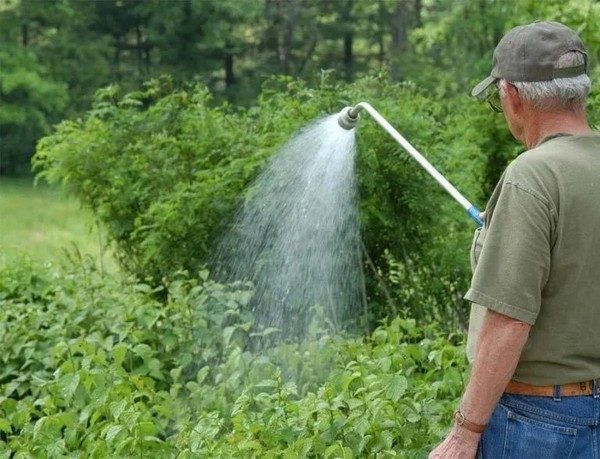
Chulymskaya honeysuckle loves both root watering and bathing in a shower from a watering can or hose
Chulymskaya honeysuckle does not need fertilizers and feeding for the first 3-4 years. You can add wood ash diluted in water (1:10). A shrub at the age of 4-5 years is fed with mineral fertilizers or organic matter (humus, bird droppings, manure).
Pruning of edible honeysuckle Chulymskaya
Chulymskaya pruning is carried out after three years. Until this period, only excessively long shoots and dry branches are removed with pruning shears.
The haircut is postponed until August. It is undesirable to do this during flowering, since there is a risk of losing half of the future harvest. You can cut the Chulym honeysuckle at the beginning of spring: at this time, the shoots that grow deep into the bush, old, rotten and dry from the base, are removed.
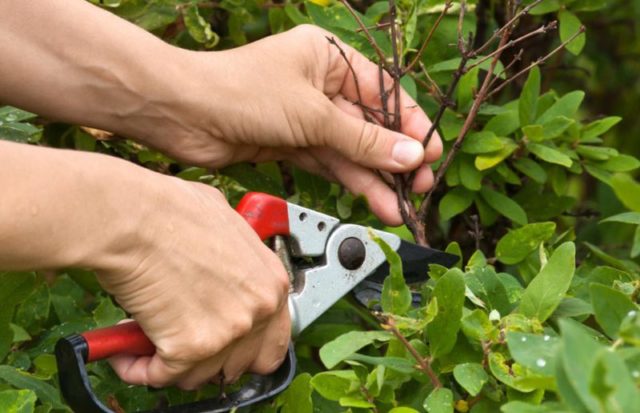
Dried or frozen shoots interfere with the development of the bush
Sanitary pruning is relevant every 2 years. Cut out about 1/3 of the bush. This stimulates the plant to bear fruit more and allows for a neat crown.
Rejuvenating pruning is suitable for old Chulym honeysuckle bushes. It is performed at the end of autumn or in March. All shoots are cut off at a distance of 30 cm from the ground.
Wintering
Honeysuckle is one of the most hardy plants for the garden. The pruned Chulymskaya bush perfectly tolerates frosts down to -40 ° C, even without shelter. The upper one-year-old shoots can freeze slightly, but in the spring the plant quickly recovers.
In the southern regions, Chulym honeysuckle can bloom in autumn due to warm weather. In this case, the shoots are pruned. In Siberia and beyond the Urals, it is advised to cover the plant for the winter with hay or garden film.
Reproduction
Chulym honeysuckle is propagated using cuttings. Seeds of the plant are bred only by breeders in order to get new varieties and hybrids.
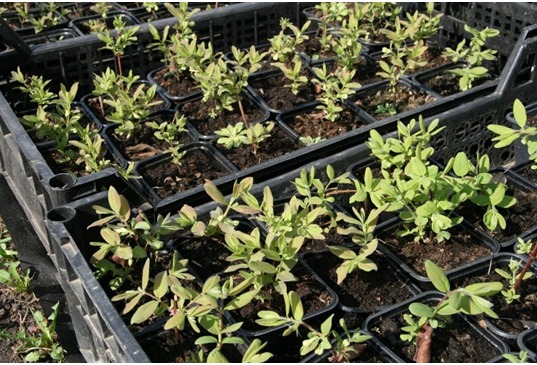
Young cuttings of Chulym honeysuckle are distinguished by quick adaptation and good survival rate.
Cutting is a familiar and popular way. In an adult bush at the age of 4-5 years, a strong shoot is cut in the spring and divided into parts of 15-20 cm. The cut should be oblique from below, straight from above. The cuttings are dried, sprayed with a growth stimulant and planted in boxes at a slight angle. The seedling soil must be constantly moist. Choose black soil with the addition of sand. After landing in the ground, they are regularly loosened. For 3 weeks, cuttings of Chulym honeysuckle should take root and bud. Depending on the region, they can be planted on a plot or in tubs.
Honeysuckle pollinators Chulymskaya
To get a good harvest, several different varieties are planted for cross-pollination. It is better to arrange the seedlings in a checkerboard pattern for a larger yield. For Chulymskaya honeysuckle, neighbors such as the Daughter of a Giant, Dwarf, Giant, Delight are suitable.During the flowering period, a large amount of pollen is formed on them, which is carried by honey bees, wasps, flies, as well as the wind.
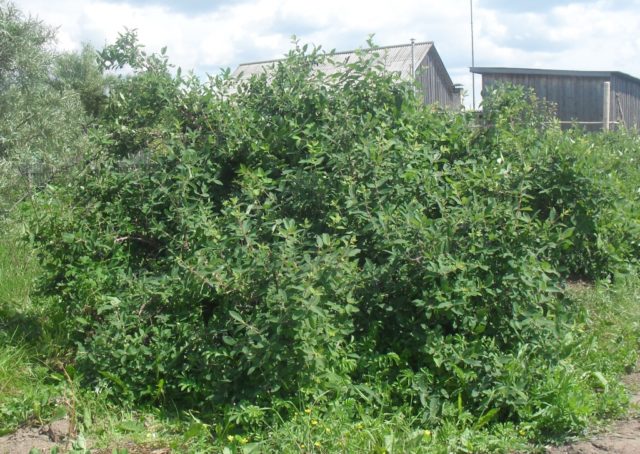
Group growth allows for uniform pollination of edible varieties
There is another way to increase the volume of the Chulym honeysuckle harvest - it is to attract pollinating insects to the site. Best of all, honey bees and bumblebees will cope with this task. Before flowering, the bushes are sprayed with a sugar solution at the rate of 3 tbsp. l. honey or sugar with a slide for 10 liters of water.
Diseases and pests
Honeysuckle is very resistant to parasites and diseases. But still there is a list of negative effects that spoil the appearance and health of the plant.
Aphids parasitize on young shoots and bushes of Chulym honeysuckle, sucking out the juice from them, weakening growth. The plant blooms worse. Leaves turn yellow, roll up into brown dry tubes. Spring spraying with a 0.2% solution of Kandifor, Actellik and Rogor helps against aphids.
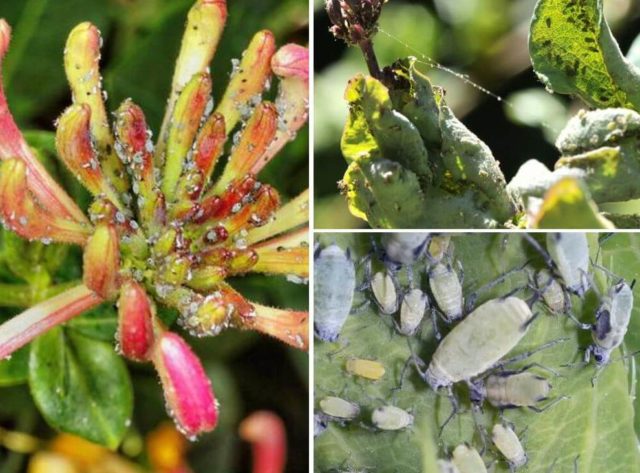
Aphid colonies can ruin the entire crop
Scale larvae hibernate under the bark of honeysuckle, and in spring they crawl out and attach to the bark, covering themselves with a hard shell. They suck out nutrients, inhibit the development of young shoots. Control measures are the same as for aphids.
Leaf-gnawing pests (sawflies, leaf rollers, golden beetles, fingerwings) gnaw holes in the leaves and spoil fresh shoots, eat out the buds and buds on the bushes in spring. Control measures: spraying with drugs Eleksar, Rogor, Inta-vir, chlorophos.
Gallic nematode - microscopic worms that live in the soil. They suck the juices from the roots and cause significant harm to the lower parts of the Chulym honeysuckle. They carry many viruses that are difficult to get rid of. Control measures: soil and root treatment with Topsin-M solution.
Powdery mildew. Appears in the form of a white or light gray bloom on the leaves of Chulymskaya. Over time, such a sheet deforms, dries and falls off. The general frost resistance of the bush decreases.
The sooty fungus appears as a black bloom on the upper side of the leaves, mainly on young shoots. Control measures and treatment of Chulym honeysuckle bushes: spraying with solutions of wood ash, soda, colloidal sulfur, laundry soap, as well as Topsin-M, Topaz preparations.
If the plant already has flowers or ovaries, it is recommended to choose a more gentle method of struggle, and it is better to postpone it altogether, or sacrifice the harvest.
Conclusion
The description of the Chulymskaya honeysuckle variety allows you to evaluate this crop before choosing it for planting. Those gardeners who have already appreciated the yield and taste of the fruit recommend the variety for planting in regions with a temperate climate.





